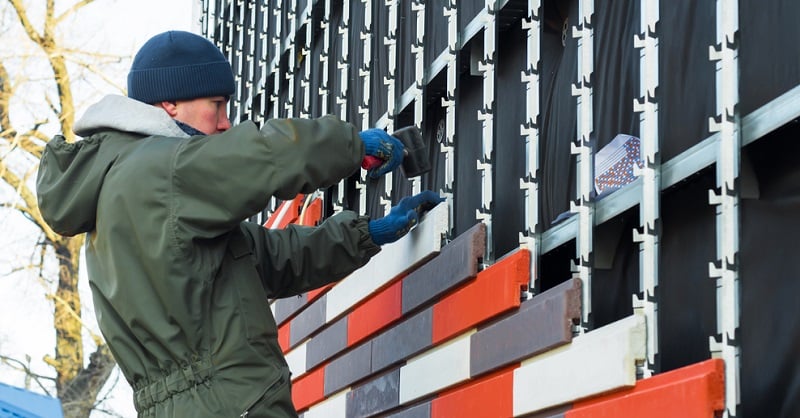
Steve Goodall is managing director of e.surv
When tragedy occurs, it is not always clear how best to proceed, but a thorough understanding of the scale and scope of the problem is essential.
Tragedy is often caused by a litany of seemingly small, incremental decisions and failures that can deliver a seismic and heart-breaking impact.
As the enquiry into the Grenfell Tower fire reveals a complex and complicated truth, all the composite parts of the housing and lending industry need to reflect on what they can do to make things better.
The first step in that process is increasing our understanding of what can be done to help.
The issues that are facing residents extend beyond diagnosis and remedial action. Elements such as supply chain issues affect everyone trying to deal with this problem.
It was reported recently that the shortage of metal cladding and roofing has reached crisis point, with contractors being told fresh supplies won’t hit sites until next year. The shortage of these materials is now a major problem across the industry.
The public could be forgiven for thinking that nothing has really changed since June 2017.
Indeed, we have seen recently that we are a very long way from being able to say that such a tragedy could never happen again. There remains much soul-searching, and work, to be done.
But things are changing, albeit stealthily. Judith Hackitt’s 2018 report has set in motion a chain of proposed transformation, much of which the government has said that it is committed to implementing.
The Building Safety Bill is now going through Parliament, and the new regulator it establishes is currently recruiting hundreds of staff. It will require resources, but the oversight is right.
In a post-Grenfell world, the scale of the cladding crisis has seemed, wrongly perhaps, unfathomable and overwhelming.
Thousands of homeowners have become mortgage prisoners in their high-rise flats, with the timescales and costs for testing and remediation works often unknown.
It is still unclear just how widespread the problem is, and homeowners and their mortgage providers are sometimes not even aware of a problem until they try to sell or remortgage the property.
This is creating well-documented misery for homeowners, and an impossible situation for lenders that want to help customers move forward.
As property risk experts, the surveying and valuation industry has its role to play in helping everyone focus on solutions.
To help identify and manage the level of exposure presented by high-rise residential properties, e.surv has developed a unique and powerful database of apartment blocks in the UK that may be the subject of secured residential lending.
It is an important step that leverages the knowledge and expertise of our nationwide team of more than 600 Royal Institution of Chartered Surveyors (RICS) registered surveyors, who are in the final stage of assessing every block to determine whether it would require an EWS1 form.
Where EWS1 forms have been returned, or remedial works carried out, these are logged against each block to provide a ‘red amber green’ (RAG) status. We also record the rating contained within the EWS form.
A dedicated, chartered surveyor-led team updates the status of each block as new information is received, including dates and signatories of forms.
This means we can provide real-time data on any apartment and it is possible to see at a glance if a development is still waiting to be assessed, has been certified as acceptable to proceed, requires works, or has been remediated.
Lenders can access data at origination to determine whether to progress a mortgage application for a property in a potentially affected block, or to assist with back-book analysis to determine the level of exposure.
Clearly, the lending community needs surveying expertise to understand the level of its commitment, but statutory bodies have also expressed interest in using our work to assist with data modelling in policy areas, and to inform decisions about the cost allocation of any remedial work.
We are building out our cladding experience and expertise so that clients can benefit from it. The data has the power to make a real difference to people’s lives and give confidence to lenders; our bespoke risk-management tool can benefit them and paint an accurate picture of the real situation as it evolves for other stakeholders.
Solutions like this are only one small part of trying to help solve some of the issues facing people who are often, ultimately, the customers of our clients, consumers of public services and the constituents of MPs.
I really believe that if we can turn our minds to addressing problems, we will emerge all the better for it.



